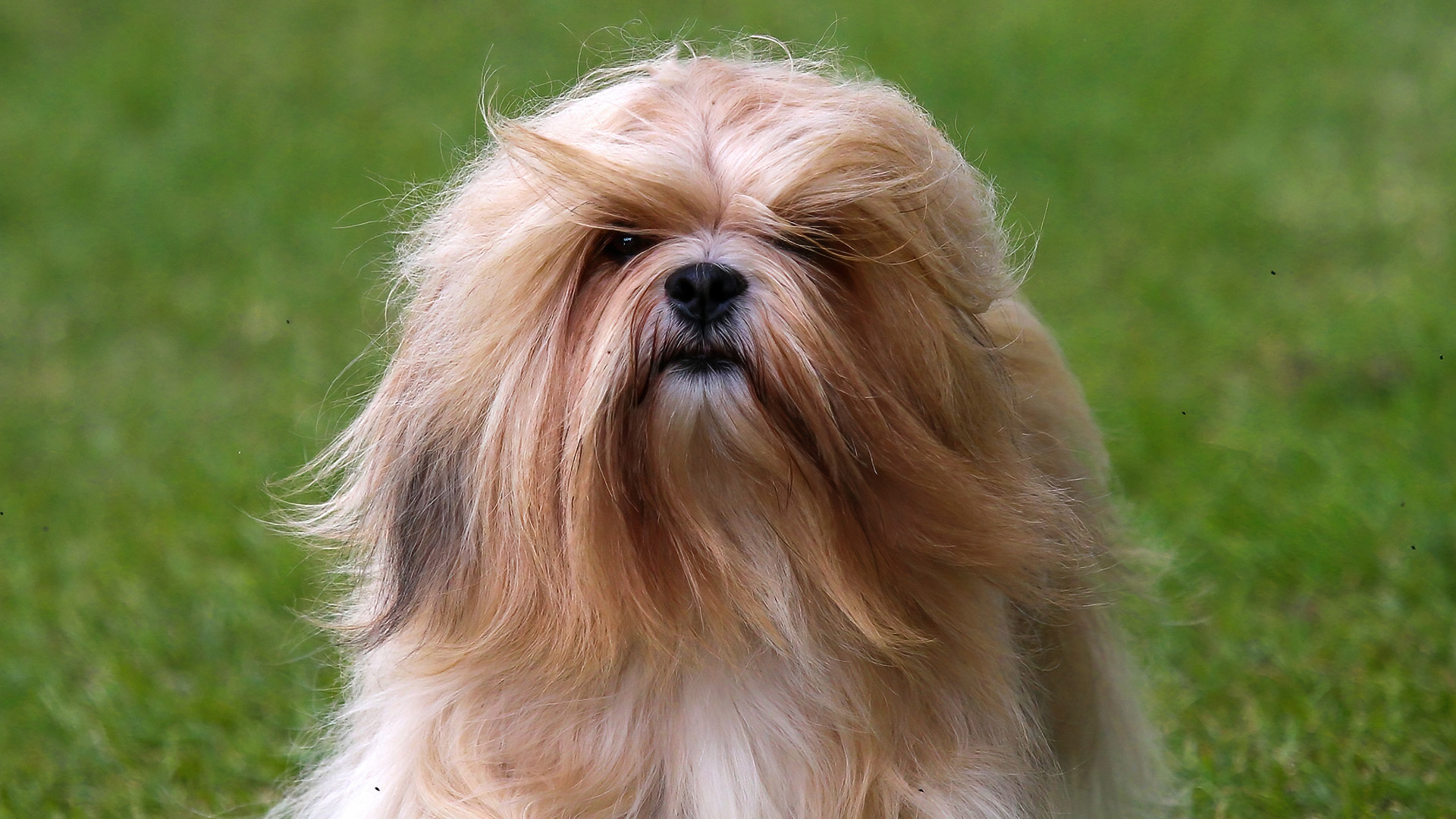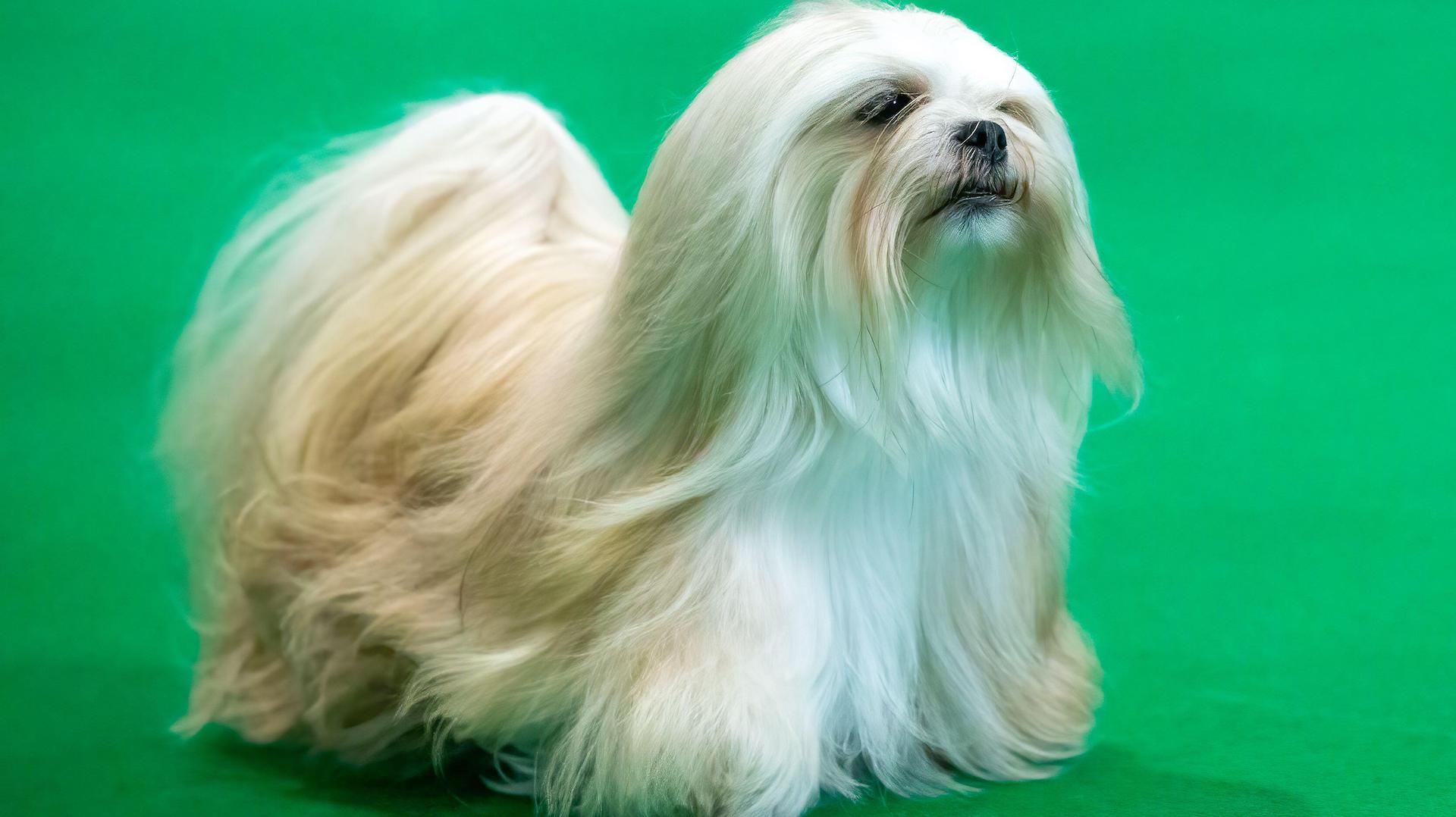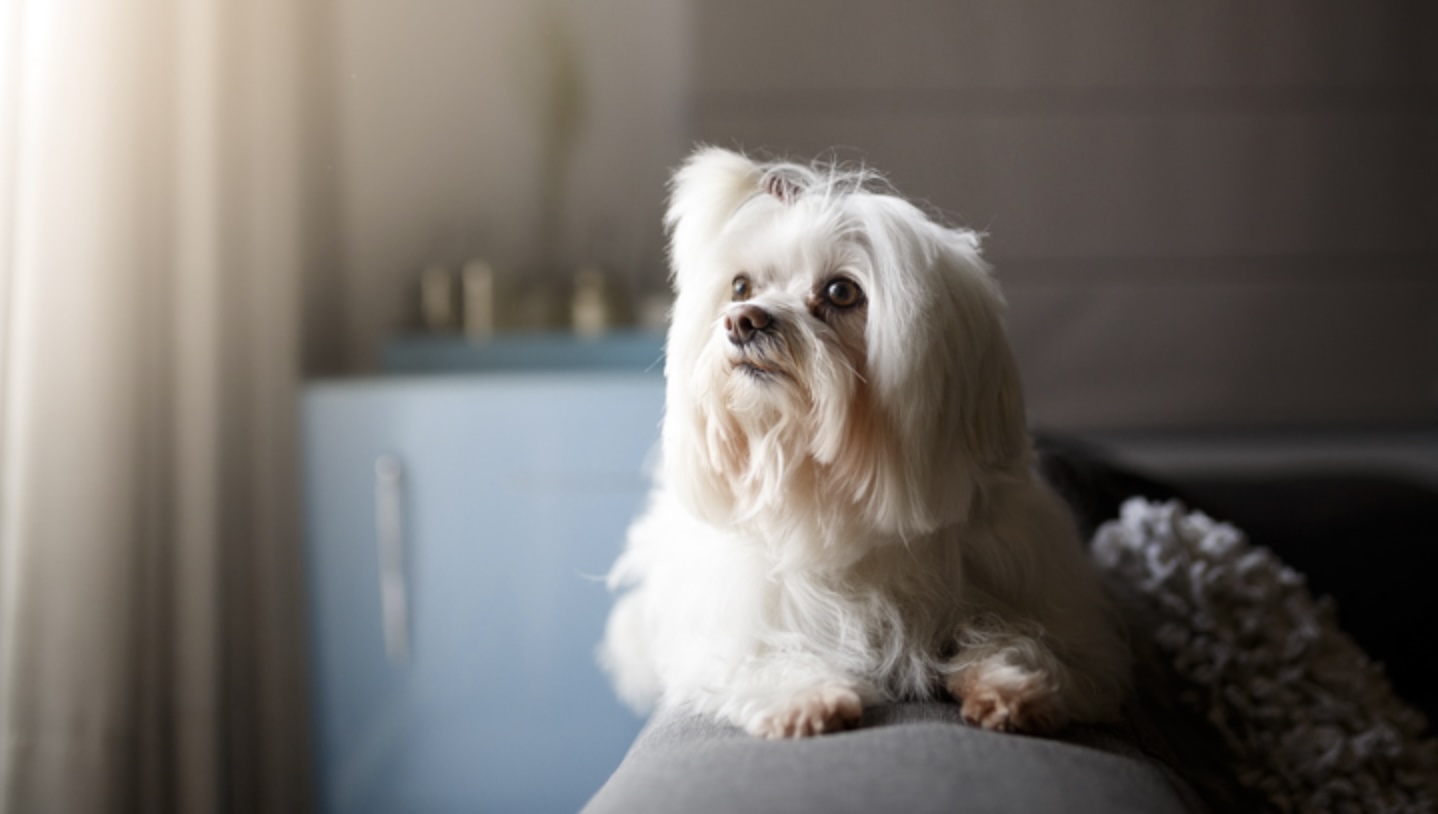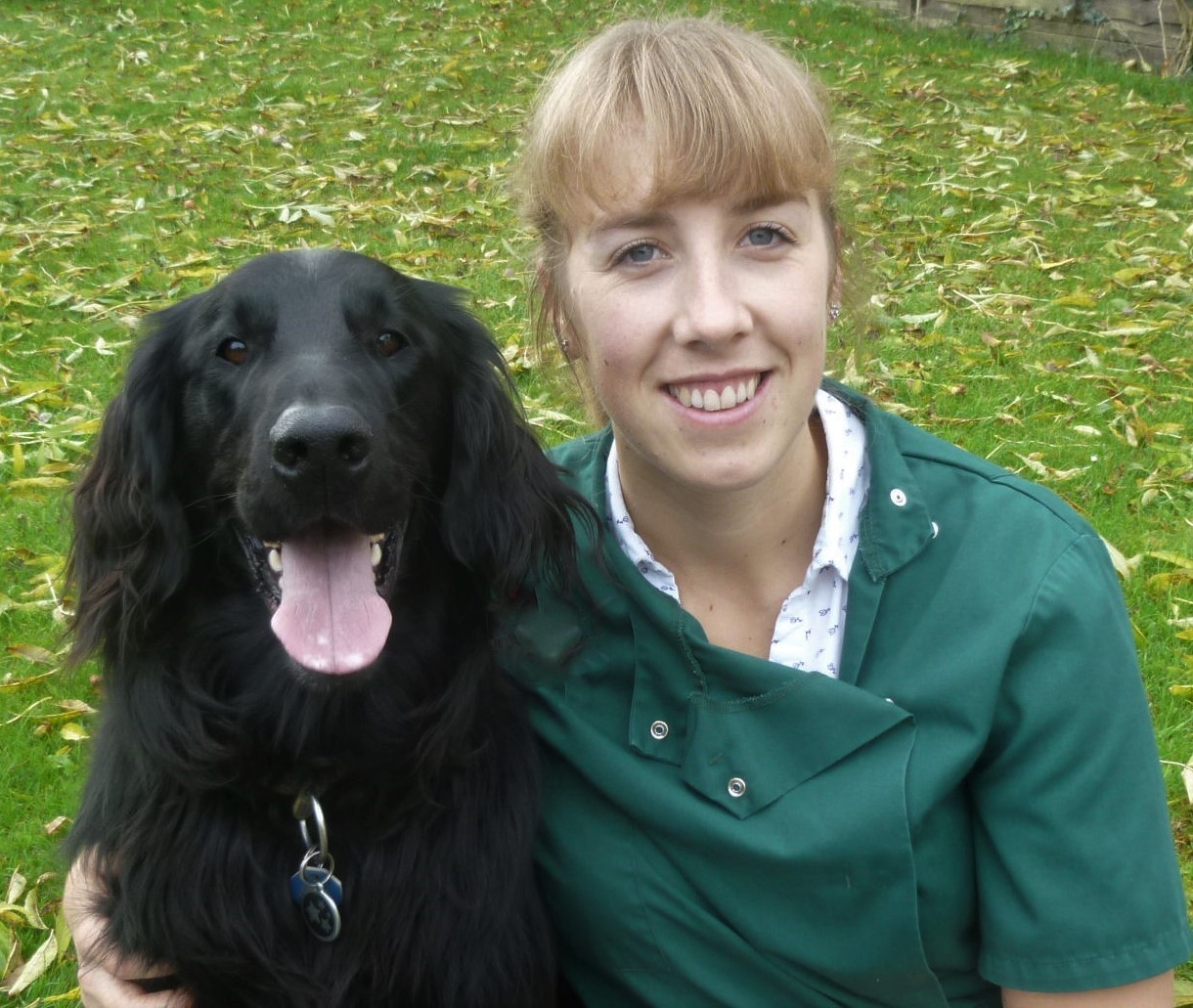Lhasa Apsos contradict themselves in so many ways, but their pros certainly outweigh the cons
Tiny, cute and fun, the Lhasa Apso can also prove to be snappy and moody


Life expectancy: 12–13 years
Size: 10-11 inches (male); 9-10-inches (female)
Coat: Double coat
Temperament: Aloof, assertive, intelligent, alert, lazy
Exercise needs: Up to an hour daily
Origin/native country: Tibet
Originating from Tibet, the Lhasa Apso is a distinctive dog with excess facial hair and a long coat. They were originally bred by monks to help guard palaces and monasteries, which makes for a rather alert breed – perhaps surprisingly given they’re not particularly energetic and generally get their exercise in bursts.
But that’s the Lhasa Apso in a nutshell: a breed of contradictions. You can find them affectionate and loving towards their human families yet indifferent and aloof around strangers. And while they’re low maintenance in some respects, they’re high maintenance in others. So let’s check out this Asian breed in more detail with help from expert vet Dr Rebecca MacMillan.
Does a Lhasa Apso need a lot of exercise?
Although it’s important for Lhasa Apsos to be active, they’re actually one of the laziest dog breeds so they don’t need to spend a great deal of time exercising with you.
“Lhasa Apsos only need moderate amounts of exercise,” says Dr MacMillan. “Most of these little dogs are happy with 40–60 minutes per day.”
They’ll burn off most of their energy themselves, in their own time, so allow them to run freely whether that’s inside your home or in a secure yard. So long as you have some of the best dog toys around (the best dog puzzle toys are particularly useful) and you engage this breed in some great brain games for dogs, you should find your Lhasa Apso is sufficiently physically and mentally stimulated with relatively little effort on your part.
Are Lhasa Apso easy to train?
Lhasa Apsos are rather independent little dogs and they’ll act upon their own wants, desires and instincts much of the time.
“They are intelligent but can be stubborn, making training a challenge for some owners,” Dr MacMillan says.
Get the best advice, tips and top tech for your beloved Pets
Persistence doesn’t always work either. In fact, if your Lhasa Apsos feels as if you’re pushing them too much, they can resist even more, forcing you into a rather frustrating situation. But you need to try regardless, socializing the breed early and doing what you can to boost your dog’s obedience and make training easier. Keep sessions short and varied and refrain from being repetitive.
“Anecdotally this breed can also be tricky to housetrain, so it is important to utilise positive reinforcement training and a consistent approach,” Dr MacMillan adds.
Do Lhasa Apso make good family pets?
Given they’re one of the smallest dog breeds, you’d likely think Lhasa Apso are affable enough, capable of getting on with just about anyone. Yet they’re actually aloof with strangers, especially if they’re not well socialized, and, while they are smart and playful, they can also be moody, over-protective and possessive of the things they value the most.
As such, experts generally suggest they’re not introduced into families with young, inquisitive and rambunctious children – especially if they’re the type to start meddling with a Lhasa Apso’s belongings.
“They are reasonably adaptable dogs but would be better suited to a family with older children or teenagers,” Dr MacMillan says. “This is because they are sensitive and can be reactive to loud noise and lots of busyness going on around them!”

Are Lhasa Apsos aggressive?
The above answer may lead you to believe Lhasa Apsos are aggressive.
“Lhasa Apsos are confident little dogs bred by Tibetan monks to guard their monasteries,” says Dr MacMillan. “This does however mean that they can be vocal and protective,” explains Dr MacMillan.
Yet they’re not inherently aggressive.
“Early socialization and training are important for Lhasa Apsos. This will help them to accept visitors and strangers more readily,” she adds. Simply keep them busy, understand their natural wariness and be aware of their guarding instincts, and you shouldn’t have any major problems.
Wisdom Panel Breed Discovery DNA Kit | Amazon
Not sure exactly what breed your dog is? This kit screens for 365+ breeds – because knowing every detail about your dog helps you understand how best to care for them.
Do Lhasa Apsos need a lot of grooming?
What you gain on one hand, you lose with the other when it comes to the Lhasa Apso. So while you’re not going to spend ages pounding the streets with this breed in order to burn off their energy, you are going to be spending a significant amount of time on their grooming regime – they are not known as a high-maintenance dog breed for nothing!
“If you keep a Lhasa Apso’s coat long, it will need frequent brushing to prevent knots and mats,” says Dr MacMillan. “This breed will also need to have their fringe tied in a top knot to keep it out of their eyes, which is why some owners choose to have their dog’s coat clipped and trimmed regularly. This can make day-to-day grooming much easier but does mean a trip to the groomers every couple of months or so.”
The good news is that the Lhasa Apso is among the small breeds that don’t shed much.
“This means they may be considered more hypoallergenic than some other dogs but they will still cause reactions in sensitive allergy sufferers,” says Dr MacMillan.
Lhasa Apso health problems
Lhasa Apso are predisposed to a few conditions. Since they are a brachycephalic breed, characterized by their flat face, they can suffer from narrowed nostrils and airways – if their nose is significantly pushed in, they’re going to be less healthy.
“Being flat faced affects their breathing and it causes other issues like snoring and exercise intolerance,” Dr MacMillan. “Brachycephalic breeds are also prone to dental overcrowding, which I find often leads to secondary issues like tartar build up, gum inflammation and tooth loss.”
This is why brachycephalic breeds are controversial with some vets and experts suggesting potential dog owners steer clear. It’s also been found that flat-faced dogs live shorter lives, although this breed tends to buck that trend. Even so, Lhasa Apsos are also prone to hereditary eye problems and they can, like many small dogs, suffer patellar luxation too.
“This joint abnormality causes the kneecap to slide out of position, which can lead to lameness and the early onset of arthritis,” says Dr MacMillan. “Lhasa Apsos are also prone to hereditary kidney dysfunction, which can lead to kidney failure in some individuals. These little dogs can also be born with renal dysplasia [abnormal kidneys]. Sadly, these kidney conditions are not curable.”
Should I get a Lhasa Apso?
Lhasa Apsos are ideal if you don’t have much time – or the inclination – to take a dog for a lengthy walk each day. They are also a good option for apartment living since they don’t take up a lot of space and they double up as excellent guard dogs. Should anyone be deemed a threat, they’ll perk up fast and give you a very strong heads-up.
Just be wary about owning this breed if you have young children or if you want a dog that is welcoming to strangers and visitors, though. Be aware too of the numerous health problems that affect breeds of this kind. Training can be tough and grooming is time-consuming but, overall, if you’re able to rub along well with a Lhasa Apso, you won’t be disappointed.
The Complete Guide To The Lhasa Apso | Amazon
This book shares advice from several top Lhasa Apso breeders, so that you can learn everything you need to know to successfully raise your Lhasa Apso from puppy to old-age.
Read next: Shih tzu breed profile, another small breed from Tibet

Rebecca is a veterinary surgeon who graduated in 2009 from the Royal Veterinary College in London. She has a wealth of experience in first opinion small animal practice, having done a mixture of day-to-day routine work, on-call emergency duties and managerial roles over the years. Rebecca enjoys medicine in particular and she is proud to have recently achieved a BSAVA postgraduate certificate in small animal medicine (with commendation).
She writes on various feline and canine topics, including behavior, nutrition, and health. Outside of work and writing she enjoys walking her own dog, spending time with her young family and baking!
Edited by Georgia Guerin.
This feature was last updated in April 2025.

David Crookes has been a journalist for almost 30 years and he has written for a host of magazines, newspapers, websites and books including the World of Animals Annual, BBC Earth, Live Science, The Independent and Tom’s Guide.
Born in England, he lives with two cats but he’s also keenly interested in the differences between the huge number of dog breeds – in fact, you can read many of his breed guides that he’s written in collaboration with vets here on PetsRadar.
With a lifelong passion for technology, too, he’s always on the lookout for useful devices that will allow people to keep their pets happier and healthier, and provide them more time to spend together.
David has a degree from Durham University, as well as postgraduate diploma in journalism from the University of Central Lancashire.


